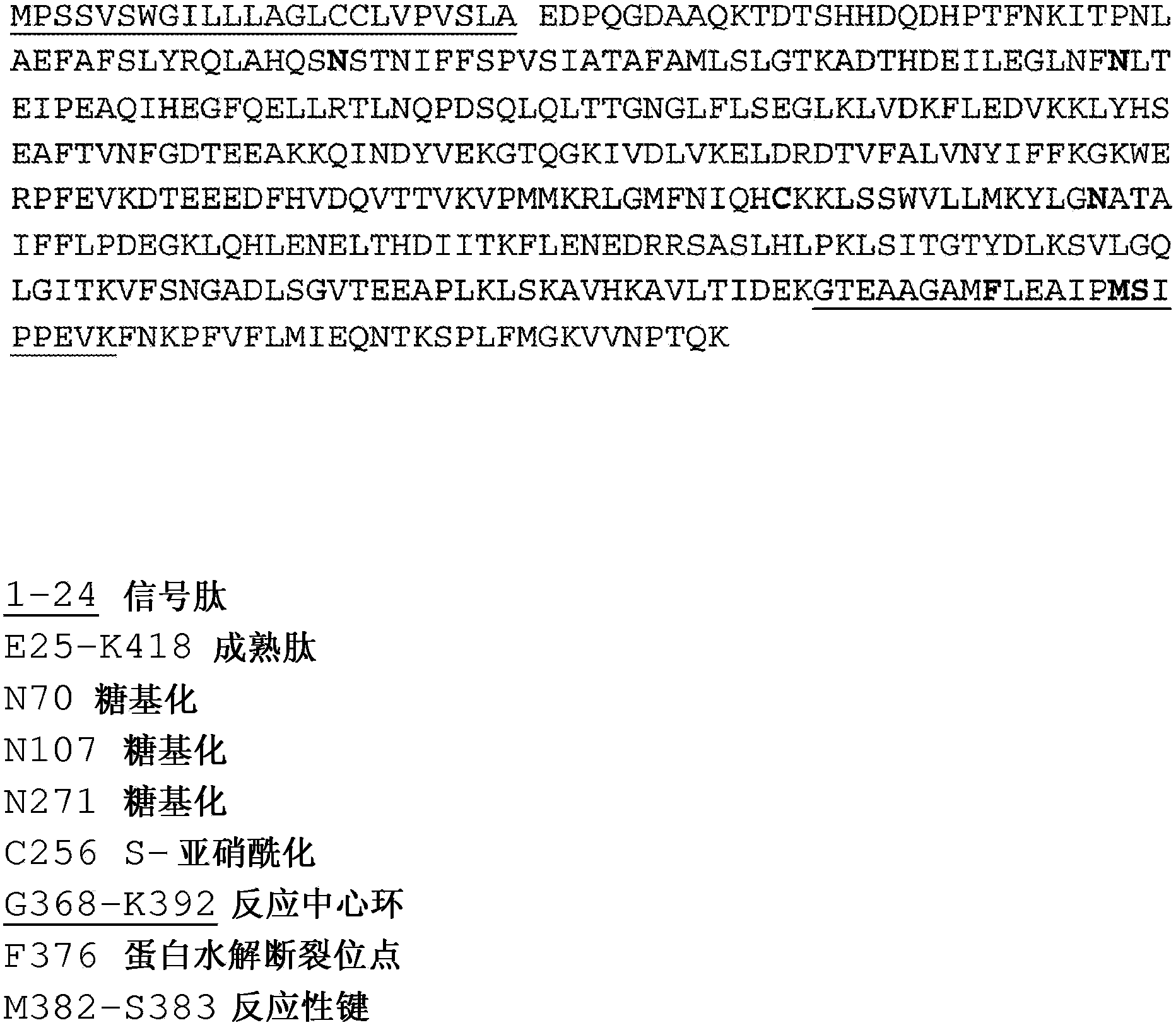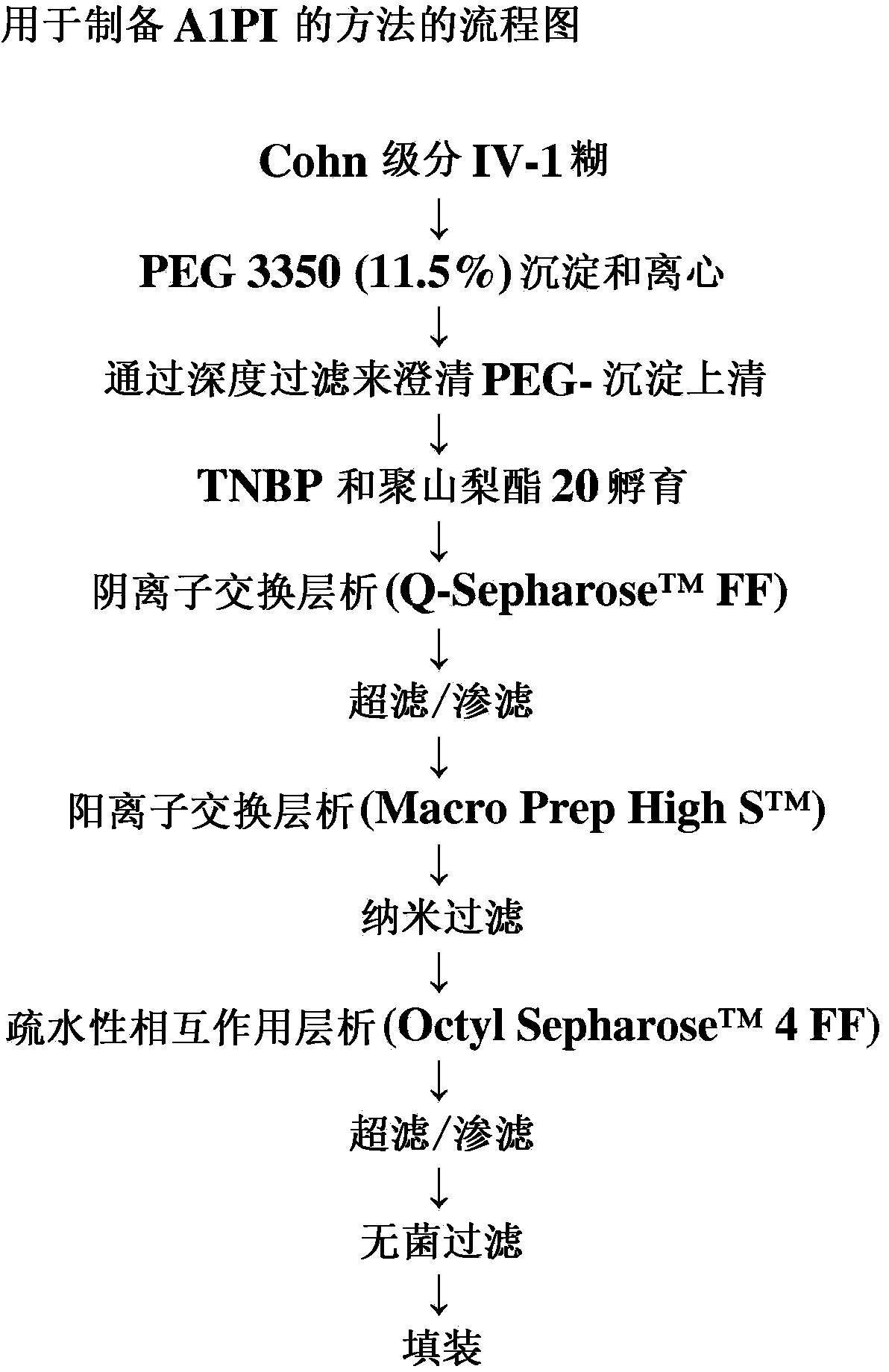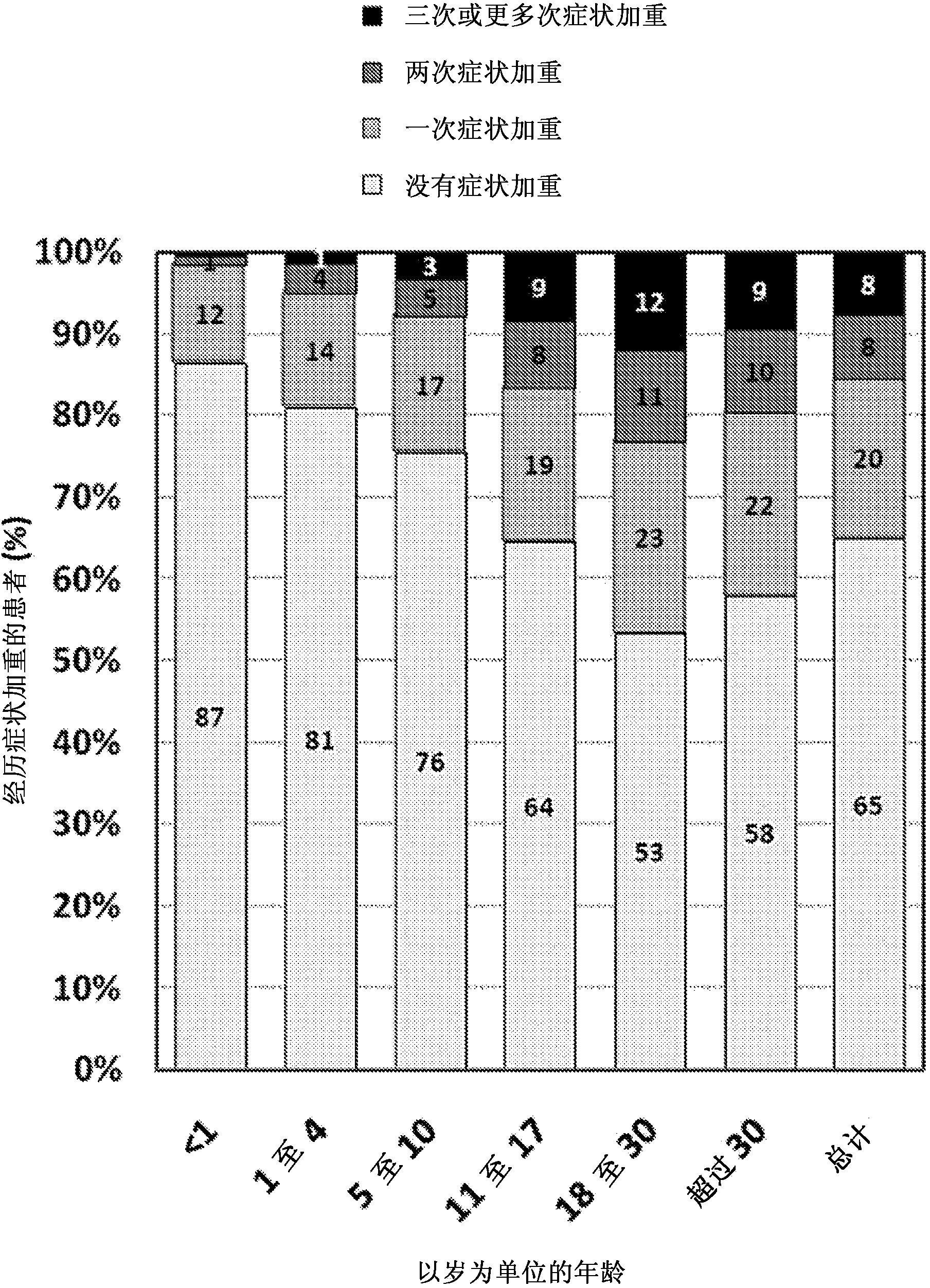Alpha1-proteinase inhibitor for delaying the onset or progression of pulmonary exacerbations
A technology for exacerbation of symptoms and lungs, applied in the direction of peptide/protein components, medical preparations containing active ingredients, anti-inflammatory agents, etc., can solve problems such as aggravation of pulmonary symptoms, exacerbation, damage to lung tissue, etc.
- Summary
- Abstract
- Description
- Claims
- Application Information
AI Technical Summary
Problems solved by technology
Method used
Image
Examples
Embodiment 1
[0138] Purified α 1 -Protease inhibitor
[0139] Including the final hydrophobic interaction chromatography step for purification of α 1 - A non-limiting procedure for protease inhibitors, described in US Patent Application Publication No. US2011 / 0237781A1, which is hereby incorporated by reference. The flow diagram of this purification process is shown in figure 2 . A1PI purified using this method is referred to herein as "A1PI-HC". The upstream process used to prepare AlPI-HC was based on Cohn's plasma fractionation. The starting material for the purification process was Cohn Fraction IV-1 paste, which was suspended in buffer solution and mixed until homogeneous. Contaminating proteins were precipitated from the suspension by addition of 11.5% PEG3350 and then removed by centrifugation followed by depth filtration. Make the PEG supernatant / filtrate with polysorbate 20 ( 20) mixed with tri-n-butyl phosphate (TNBP) to inactivate enveloped viruses (enveloped viruses). ...
Embodiment 2
[0141] Preclinical studies performed with A1PI-HC
[0142] The preclinical toxicology of AlPI-HC was evaluated using acute and 28-day daily repeated-dose studies in which aerosolized AlPI was administered by inhalation. These studies were performed in two species: Sprague-Dawley rats (Rattus norvegicus) (Rattus norvegicus) and cynomolgus monkeys (Macaca fascicularis). Additionally, a 26-week chronic inhalation toxicity study was performed in rats with a 13-week interim sacrifice. The results from these studies are summarized in Table 2.
[0143]
[0144]
[0145] In all studies listed in Table 2, AlPI-HC was well tolerated and did not cause any significant toxicity at doses well in excess of what could be administered to subjects. In the above study, cynomolgus monkeys received approximately 38 mg / kg / day for up to 28 days, while rats received approximately 46 mg / kg / day for 26 weeks. As a non-limiting example of the methods described herein, a subject may typically rec...
Embodiment 3
[0147] Advances in inhalation delivery device technology
[0148] Despite all the advantages of aerosol applications, the development of routes of administration has been hampered by poor device efficiency and the lack of inhalation systems that can efficiently deliver larger proteins to the peripheral airways. Previous devices required excessively long inhalation times and delivered widely varying amounts of AlPI primarily to the central airways rather than the peripheral lungs. New advances in inhalation delivery technology have created devices that deliver more effectively and reproducibly to the lungs, such as AKITA 2 Nebulized inhaler system. Brand et al., Eur. Respir. J. 34(2):354-360 (2009).
[0149] Using AKITA 2 (State-of-the-art delivery device) A recent study of A1PI deposition characterized that in a single inhalation of 2mL (70mg of A1PI) 99m Tc-labeled Later, the uniformity of the deposition site of the drug in the lung. Brand et al., Eur. Respir. J. 34:35...
PUM
| Property | Measurement | Unit |
|---|---|---|
| diameter | aaaaa | aaaaa |
| diameter | aaaaa | aaaaa |
Abstract
Description
Claims
Application Information
 Login to View More
Login to View More - R&D
- Intellectual Property
- Life Sciences
- Materials
- Tech Scout
- Unparalleled Data Quality
- Higher Quality Content
- 60% Fewer Hallucinations
Browse by: Latest US Patents, China's latest patents, Technical Efficacy Thesaurus, Application Domain, Technology Topic, Popular Technical Reports.
© 2025 PatSnap. All rights reserved.Legal|Privacy policy|Modern Slavery Act Transparency Statement|Sitemap|About US| Contact US: help@patsnap.com



